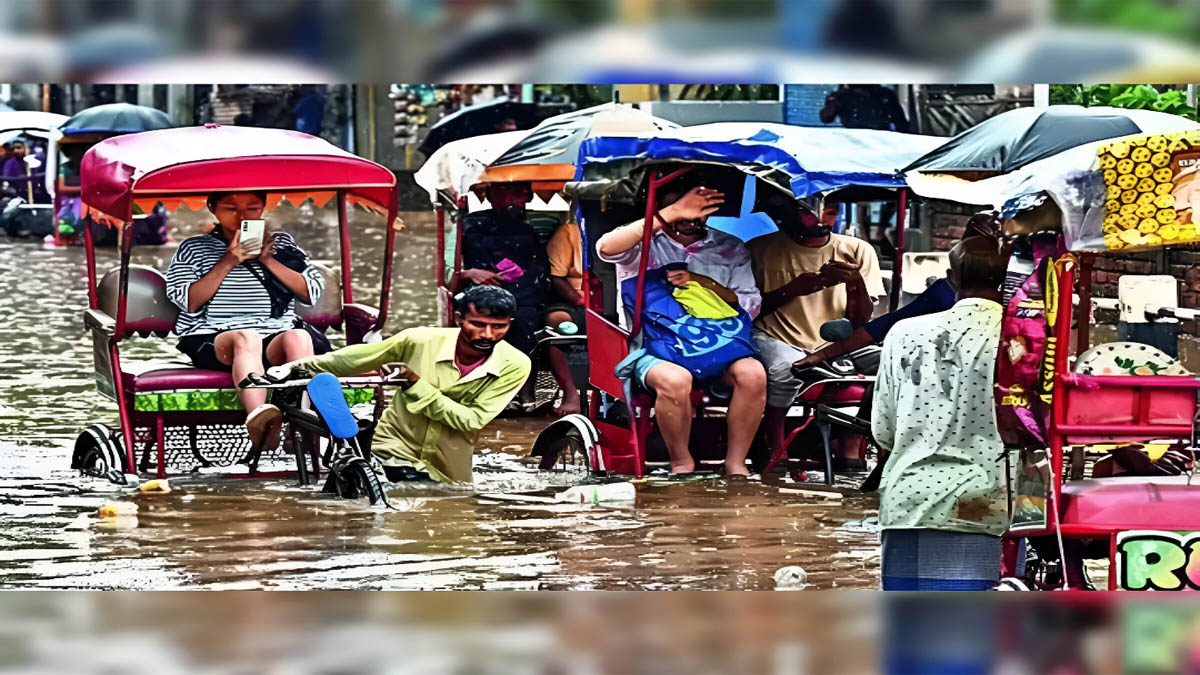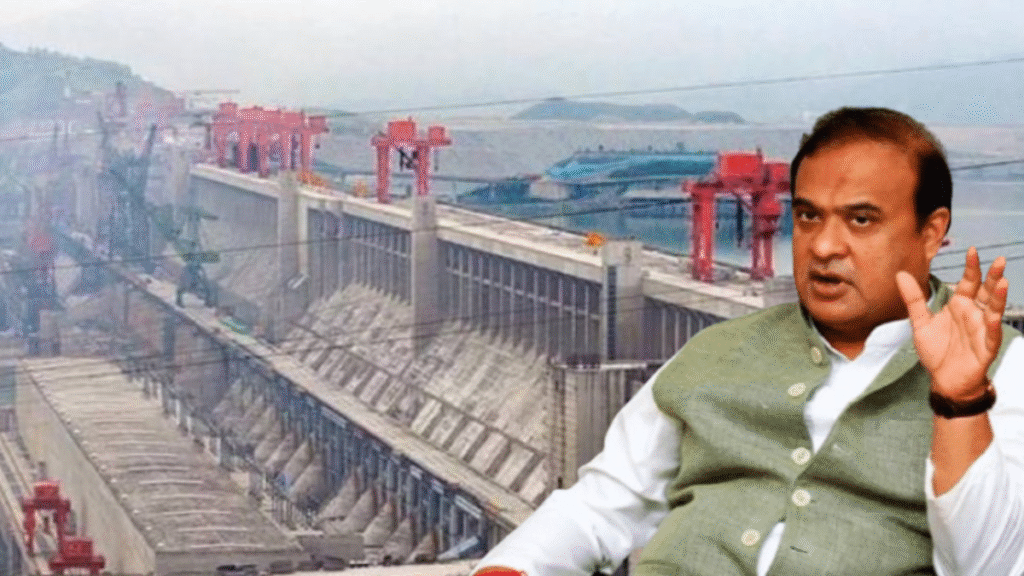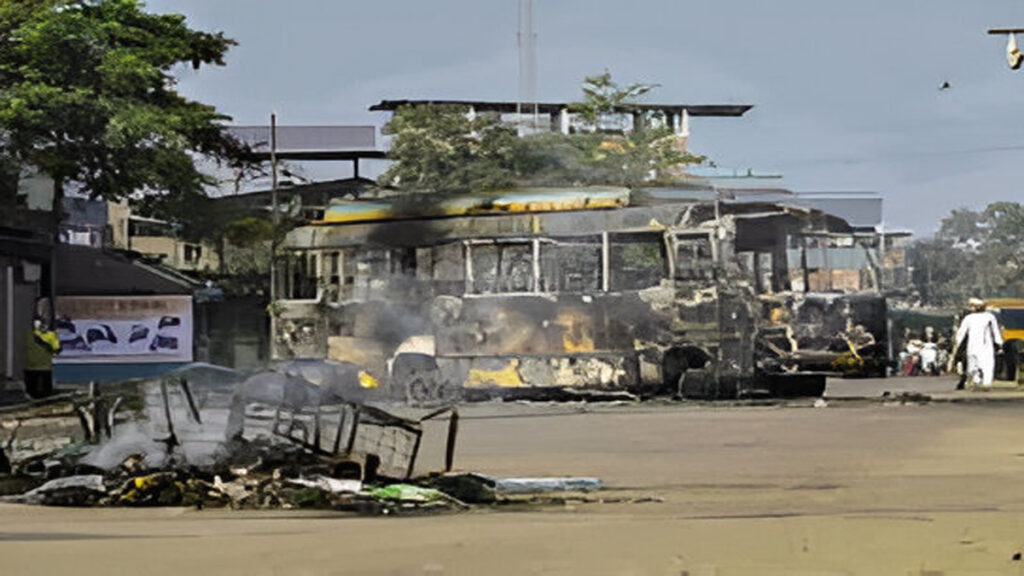Now Reading: Northeast India Grapples with Devastating Floods and Landslides: A Humanitarian Crisis Unfolds
-
01
Northeast India Grapples with Devastating Floods and Landslides: A Humanitarian Crisis Unfolds
Northeast India Grapples with Devastating Floods and Landslides: A Humanitarian Crisis Unfolds

Northeast India is currently reeling under the severe impact of incessant and heavy monsoon rains, triggering widespread flooding and devastating landslides across the region. Assam, Mizoram, Sikkim, and Manipur are among the states most severely affected, facing a grim humanitarian crisis with rising death tolls, extensive displacement, and critical infrastructure damage.
Assam: A State Submerged
Assam remains at the forefront of the crisis, bearing the brunt of the relentless downpour. At least 10 people have lost their lives in the state due to floods and landslides, with the death toll steadily climbing. The Assam State Disaster Management Authority (ASDMA) reports a dire situation, with 764 villages across 19 districts submerged and over 3.64 lakh people affected. The Barak Valley, particularly districts like Cachar (Silchar, Katigorah, Udharbond, Lakhipur, Sonai), Karimganj, and Hailakandi, has experienced exceptionally heavy rainfall, with Silchar recording a staggering 42 cm in 24 hours.
Major rivers, including the Brahmaputra (at Dibrugarh and Neematighat), Dhansiri, Kopili, Katakhal, Barak, and Kushiyara, are flowing precariously above danger levels, exacerbating the flood situation. A 200-meter breach in an embankment at Nagar Gaon in Lakhimpur, caused by excess water release from NEEPCO’s Ranganadi Dam, has further compounded the woes, forcing hundreds into makeshift shelters. Over 10,000 people have sought refuge in relief camps, while rescue operations by NDRF, SDRF, Indian Air Force, and local administrations are working tirelessly to evacuate stranded individuals. Chief Minister Himanta Biswa Sarma has urged vigilance, warning of worsening conditions due to upstream rainfall in Arunachal Pradesh.
Mizoram: Landslides Wreak Havoc
Mizoram has also been severely impacted by heavy rains, leading to multiple landslides and widespread waterlogging. At least five deaths have been reported in the state, with numerous houses collapsing and highways blocked due to debris. Over 211 landslide incidents have been reported across the state, with 83 highways blocked. Power outages are widespread, affecting more than a third of the state due to damaged substations. The capital, Aizawl, has seen all schools closed as a precautionary measure, highlighting the gravity of the situation.
Sikkim: Tourists Stranded, Connectivity Severed
Sikkim, particularly its northern districts, is facing significant challenges with over 1,200 tourists stranded due to landslides and washed-out roads. The overflowing Teesta River has caused substantial damage to critical infrastructure, including the collapse of the Sankalang bamboo bridge, a vital link to the Dzongu constituency. While one death has been reported, rescue efforts are underway to restore access and provide aid to those cut off from the rest of the state.
Manipur: Imphal Under Water
Manipur has also experienced severe flooding, with the capital city of Imphal brought to a standstill. Heavy rainfall has led to swollen rivers breaching embankments in areas like Khurai, Heingang, and Checkon, inundating numerous localities. Over 3,800 people have been affected, and 883 houses damaged. The Indian Army and Assam Rifles have launched extensive search and rescue operations, evacuating nearly 800 people from submerged areas, particularly in Imphal East. Authorities have ordered the extension of summer vacation in schools in the worst-hit districts, reflecting the ongoing emergency.
Broader Impact and Outlook
The current monsoon fury has claimed at least 34 lives across Northeast India, affecting hundreds of thousands of people and displacing thousands more across Assam, Manipur, Tripura, Sikkim, Arunachal Pradesh, and Meghalaya. Union Home Minister Amit Shah has assured affected states of all possible central assistance, indicating the national concern over the escalating crisis.
The India Meteorological Department (IMD) has issued warnings of continued heavy to very heavy rainfall, with isolated instances of “extremely heavy rainfall” expected in parts of Assam and Tripura, indicating that the region may not see immediate respite. While the overall monsoon forecast for India in 2025 predicted above-normal rainfall, the Northeast was an exception, with projections of below-normal rainfall. However, the current intense spell highlights the erratic nature of monsoon patterns, likely influenced by changing climate conditions, which can lead to localized extreme events despite overall forecasts.
The situation remains critical, with relief and rescue operations intensified across the affected states. The priority is to save lives, provide immediate relief to those displaced, and begin the arduous task of assessing and repairing the extensive damage caused by this devastating wave of floods and landslides. The long-term recovery will require sustained efforts and comprehensive strategies to mitigate the impact of such natural disasters in this vulnerable region.










